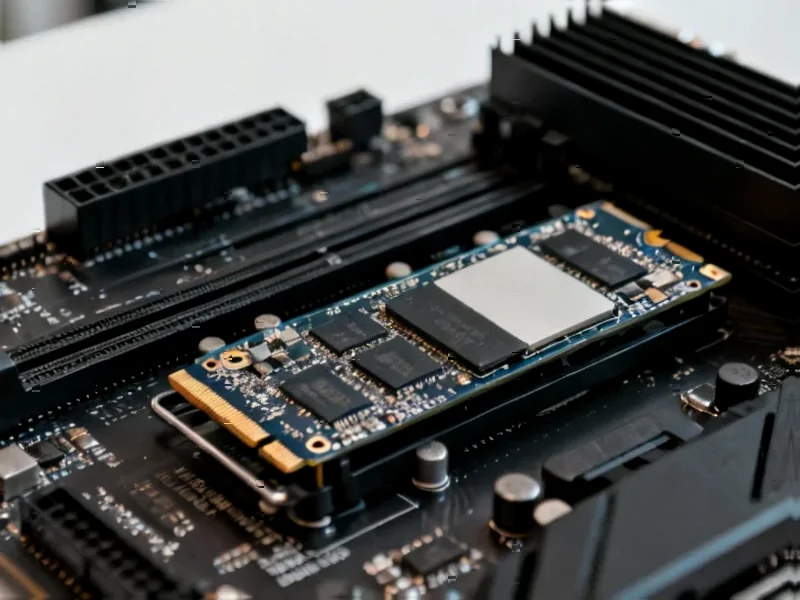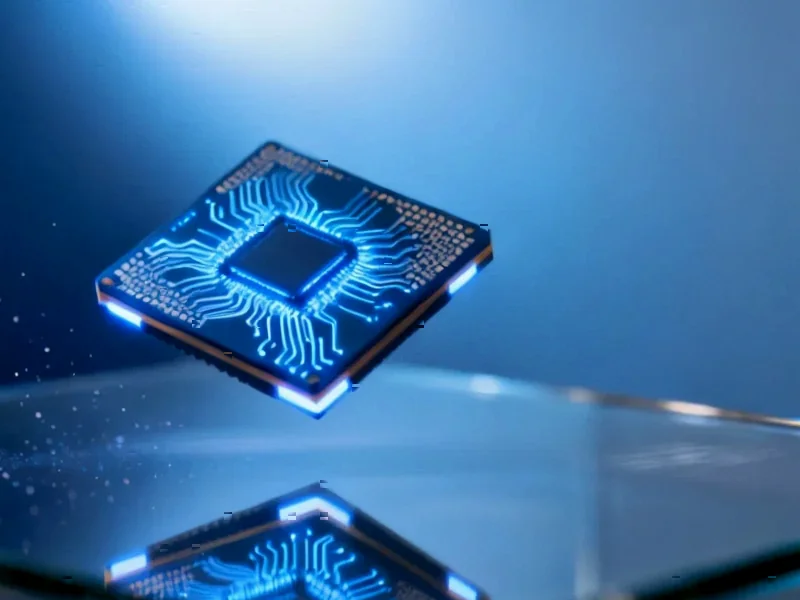According to Guru3D.com, MSI has launched a new non-MAX version of its MAG B850 TOMAHAWK WIFI motherboard that maintains most features of the MAX edition while making strategic reductions in heatsink coverage, wireless networking, and PCIe configuration. The board features a robust 14+2+1 phase digital power design with 80A DrMOS stages, dual 8-pin EPS connectors, and supports DDR5 memory speeds exceeding 8200 MT/s. Connectivity includes three M.2 slots (two PCIe 5.0 x4, one PCIe 4.0 x4), four SATA III ports, 5 GbE Ethernet, Wi-Fi 7, and a comprehensive rear I/O with multiple USB-C and USB-A ports. The non-MAX model represents MSI’s effort to provide a cost-optimized alternative while retaining core performance capabilities for AM5 platform users.
The Art of Market Segmentation
MSI’s non-MAX strategy represents a sophisticated approach to market segmentation that’s becoming increasingly common in the motherboard industry. By creating a slightly pared-down version of their popular B850 Tomahawk, MSI can target multiple price points without developing an entirely new product line. This approach allows them to capture both the enthusiast willing to pay for every feature and the value-conscious builder who prioritizes core performance over premium extras. The timing is strategic as AMD’s AM5 platform matures and motherboard manufacturers seek to expand their addressable market beyond early adopters to mainstream users.
Calculated Cost Optimization
The specific feature reductions in the non-MAX model reveal MSI’s careful cost-benefit analysis. Smaller heatsinks represent one of the most straightforward manufacturing cost reductions while having minimal impact on performance for most users. The wireless networking downgrade from potentially more expensive solutions to Realtek’s offering demonstrates how manufacturers can trim costs in areas where many users won’t notice performance differences. This selective optimization allows MSI to maintain the board’s core value proposition—excellent power delivery and memory support—while achieving the price reduction needed to compete in the crowded mid-range segment.
Navigating AM5 Competition
The AM5 motherboard market has become intensely competitive as manufacturers jockey for position in AMD’s growing ecosystem. With companies like ASUS, Gigabyte, and ASRock all offering multiple variants in similar price brackets, MSI’s non-MAX approach represents a defensive maneuver to protect market share. By offering a slightly more affordable version of an established product, MSI can counter aggressive pricing from competitors without engaging in destructive price wars that would erode margins across their entire product line. This strategy also helps them maintain relevance as component prices continue to normalize post-pandemic.
Revenue and Margin Considerations
From a financial perspective, the non-MAX model serves multiple revenue objectives. It creates an upsell path where customers comparing specifications might opt for the higher-margin MAX version if budget allows. Simultaneously, it prevents MSI from losing sales to competitors’ more affordable offerings. The manufacturing efficiencies are significant—using similar PCB designs, components, and production processes across both models reduces development costs and streamlines inventory management. This approach typically yields better overall profitability than creating entirely separate product lines for different market segments.
Strategic Implications for the Industry
MSI’s move signals a broader industry trend toward product line optimization as component markets mature. We’re likely to see more manufacturers adopting similar tiered approaches across their portfolios, particularly as DDR5 and PCIe 5.0 become standard rather than premium features. This strategy also reflects the changing economics of motherboard manufacturing, where development costs for new platforms have increased significantly, making product variations more financially attractive than ground-up designs. For consumers, this means more choice at different price points, though it requires careful comparison shopping to understand exactly what features are included at each tier.




